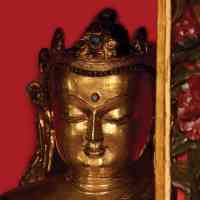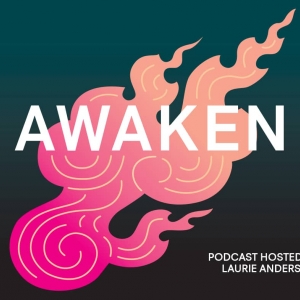
Theme: Interconnectedness
About the Meditation
Meditation session led by Sharon Salzberg.
The guided meditation begins at 15:04.
For centuries Himalayan practitioners have used meditation to quiet the mind, open the heart, calm the nervous system, and increase focus. Now Western scientists, business leaders, and the secular world have embraced meditation as a vital tool for brain health.
Whether you’re a beginner, a dabbler, or a skilled meditator seeking the company of others, join expert teachers in a forty-five-minute weekly program designed to fit into your lunch break. Each session will be inspired by a different work of art from the Rubin Museum’s collection and will include an opening talk, a twenty-minute meditation session, and a closing discussion.
This program is supported with thanks to our presenting partners Sharon Salzberg, the Interdependence Project and Parabola Magazine.


Related Artwork

An elaborately crowned Vajradhara, primordial guru of Tantric lineages, sits in the center of the composition surrounded by the 85 great tantric adepts (mahasiddha), the exemplary practitioners of those teachings. Each of these adepts is engaged in a different activity and is identified by an inscription, following the verse eulogy attributed to the Indian master Vajrasana (about 1100). An interesting feature of this painting is the large number of adepts shown in strenuous yogic poses. Vajradhara is seated on an elaborate throne with wide pillars and adorned with multicolored scrolling sea monster (makara) tails. Such features identify it as art of the ancient kingdom of Guge in western Tibet.
The back of the painting features a stupa with a number of atypical features. Windows are found on both the base and the square section on top of the dome (harmika). The dome also has some odd details, including a niche and decorative eyes. The chains with bells and the representations of the crescent moon and the sun, although common symbols that stand for eternity, are particularly remarkable here for their large size and unusual depiction.
About the Speaker

Sharon Salzberg, cofounder of the Insight Meditation Society in Barre, Massachusetts, has guided meditation retreats worldwide since 1974.
Her latest book is Real Change: Mindfulness to Heal Ourselves and the World. Sharon is also the author of several publications including the New York Times bestseller Real Happiness: The Power of Meditation, Faith: Trusting Your Own Deepest Experience, Lovingkindness: The Revolutionary Art of Happiness, and Real Love: The Art of Mindful Connection. While running her own podcast The Metta Hour and interviewing 100+ influential voices in meditation and mindfulness movements, Sharon has regularly contributed to many onstage conversations at the Rubin.


